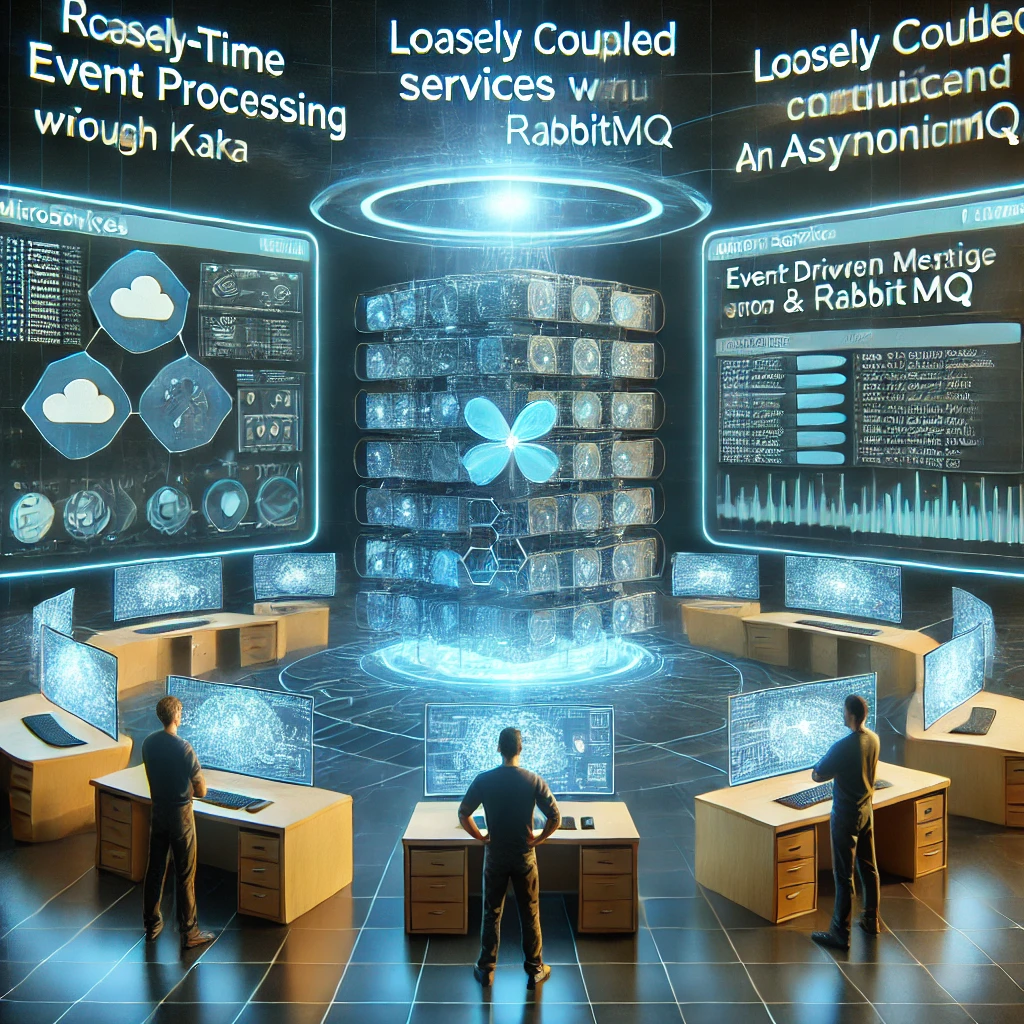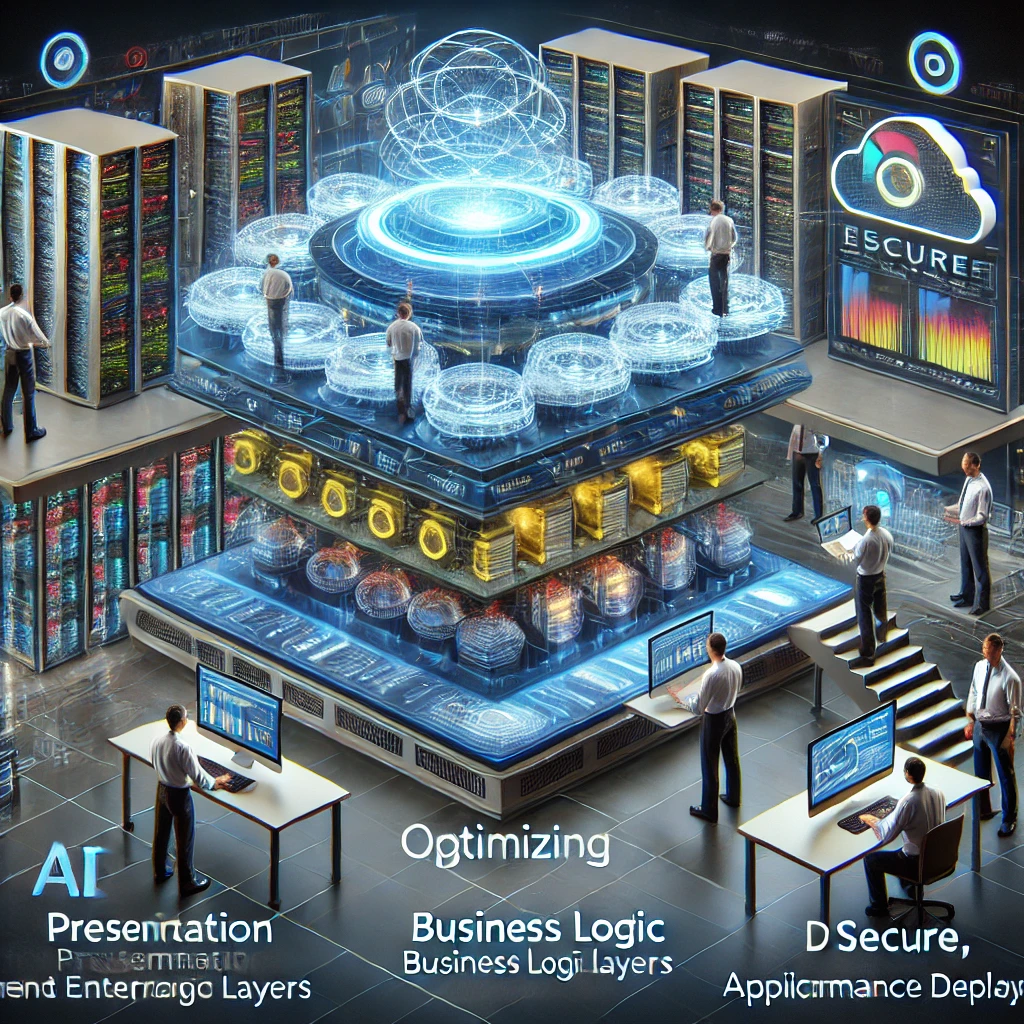comprehensive guide to Major Architecture Concepts in Modern Data Systems 2024
Modern data systems rely on scalable, reliable, and distributed architectures to efficiently handle growing volumes of data. A well-defined architecture ensures high availability, fault tolerance, and flexibility, allowing businesses to operate seamlessly in a dynamic environment.
In this guide, we explore: ✅ Domains and Services
✅ Distributed Systems and Scalability
✅ Architecture Tiers (Single-Tier vs Multi-Tier)
✅ Monolith vs. Microservices
✅ Event-Driven Architecture
1. Domains and Services

A domain represents a real-world subject area, while a service is a subset of functionality that performs specific tasks within that domain.
A. Understanding Domains
A domain is the sphere of knowledge, influence, or activity that an application serves. 🔹 Example:
- The Sales domain consists of:
- Order service → Processes customer orders.
- Invoicing service → Handles billing and payments.
- Product service → Manages product inventory.
B. Services in a Domain
Each domain contains multiple services, and some services may be shared across domains. 🔹 Example:
- The Accounting domain consists of:
- Invoicing service (shared with Sales)
- Payroll service (unique to Accounting)
- Accounts Receivable service
✅ Well-designed service boundaries enhance modularity and reusability.
2. Distributed Systems and Scalability

Distributed systems ensure scalability, availability, and fault tolerance by distributing workloads across multiple machines.
A. Scalability in Distributed Systems
Scalability allows a system to increase capacity to handle more traffic or larger datasets.
🔹 Types of Scalability:
| Type | Description |
|---|---|
| Vertical Scaling | Increasing resources (CPU, RAM, Disk) on a single machine. |
| Horizontal Scaling | Adding more machines to distribute the load. |
🚀 Modern architectures favor horizontal scaling for flexibility and fault tolerance.
B. Elasticity in Cloud Systems
Elasticity is the ability of a system to automatically scale up and down based on workload.
✅ Benefits:
- Improves performance by handling spikes in demand.
- Reduces costs by releasing unused resources.
🔹 Example:
A cloud-based e-commerce platform scales up during peak shopping seasons and scales down during low traffic periods.
C. Availability and Reliability
| Concept | Definition |
|---|---|
| Availability | Percentage of time the system remains operational. |
| Reliability | Probability that a system performs correctly for a given period. |
🔹 Ensuring Availability:
- Replication → Data is copied across multiple servers.
- Leader-Follower Model → One node manages requests while others replicate.
🚀 Distributed architectures prevent single points of failure (SPOF).
3. Architecture Tiers: Single-Tier vs. Multi-Tier

A. Single-Tier Architecture
🔹 Database and application are tightly coupled on the same machine.
✅ Pros:
- Simplicity in deployment.
- Suitable for development & testing.
🚨 Cons:
- Single point of failure (if the machine crashes, the whole system fails).
- Not scalable for production.
B. Multi-Tier Architecture
🔹 Separates different layers of an application to improve scalability and modularity.
✅ Common Layers:
| Layer | Purpose |
|---|---|
| Presentation Layer | User Interface (UI) and client interactions. |
| Business Logic Layer | Handles core functionalities and rules. |
| Data Layer | Stores and manages data. |
🚀 Multi-tier architectures improve reliability and enable technology flexibility.
C. Shared-Nothing vs. Shared-Disk Architecture
| Architecture | Description |
|---|---|
| Shared-Nothing | Each node handles its own data and resources independently. |
| Shared-Disk | Nodes share the same storage, enabling quick failover. |
🔹 Choosing the right architecture depends on workload requirements.
4. Monolith vs. Microservices
A. Monolithic Architecture
🔹 All functionalities are within a single codebase and deployment.
✅ Pros:
- Easier initial development and deployment.
- Suitable for small projects.
🚨 Cons:
- Harder to scale as the system grows.
- Difficult to update or maintain individual components.
🔹 Example:
An early-stage startup may begin with a monolith before transitioning to microservices.
B. Microservices Architecture
🔹 Breaks a monolithic system into independent, modular services.
✅ Pros:
- Scalability → Each service scales independently.
- Technology Flexibility → Different teams can use different tech stacks.
- Fault Isolation → One failed service does not crash the whole system.
🚨 Challenges:
- Increased complexity due to service interdependencies.
- Requires robust API management.
🚀 Microservices allow teams to work independently, accelerating innovation.
5. Event-Driven Architecture

Businesses are dynamic, requiring systems that can react to events in real-time.
A. What is an Event?
An event is a state change in a system. 🔹 Examples of Events:
- A customer places an order.
- A sensor records temperature data.
- A payment transaction is completed.
✅ Event-Driven Systems Improve: 1️⃣ Scalability → Events can be processed asynchronously.
2️⃣ Fault Tolerance → If one service fails, others can continue operating.
3️⃣ Real-Time Processing → Ideal for fraud detection, monitoring, and analytics.
B. Components of Event-Driven Architecture
🔹 Core Components:
| Component | Function |
|---|---|
| Event Producer | Generates the event (e.g., an order is placed). |
| Event Router | Routes the event to appropriate consumers (e.g., Kafka, RabbitMQ). |
| Event Consumer | Processes the event asynchronously. |
🚀 Loosely coupled services make event-driven systems resilient!
6. Key Takeaways
✅ Domains and Services → Define functional boundaries.
✅ Distributed Systems → Enable scalability and reliability.
✅ Single-Tier vs. Multi-Tier → Multi-tier architectures improve modularity.
✅ Monolith vs. Microservices → Microservices enhance scalability and flexibility.
✅ Event-Driven Architecture → Enables real-time event processing.
💡 Which architecture are you using in your projects? Share your thoughts below! 🚀